Watch evolution live in action at the Galapagos Islands! The unique animal & bird species, gorgeous islands and extraordinary marine biodiversity make these islands an oasis for animal lovers.
Treat yourself to some beautiful exploration of this planet. Dotted in the middle of the Pacific Ocean is a special world - the Galapagos Islands. Surrounded by lovely waters, these clusters of islands are remarkably rich. Its array of both animal and bird species really gives you a new perspective regarding the wonders of the Mother Earth.
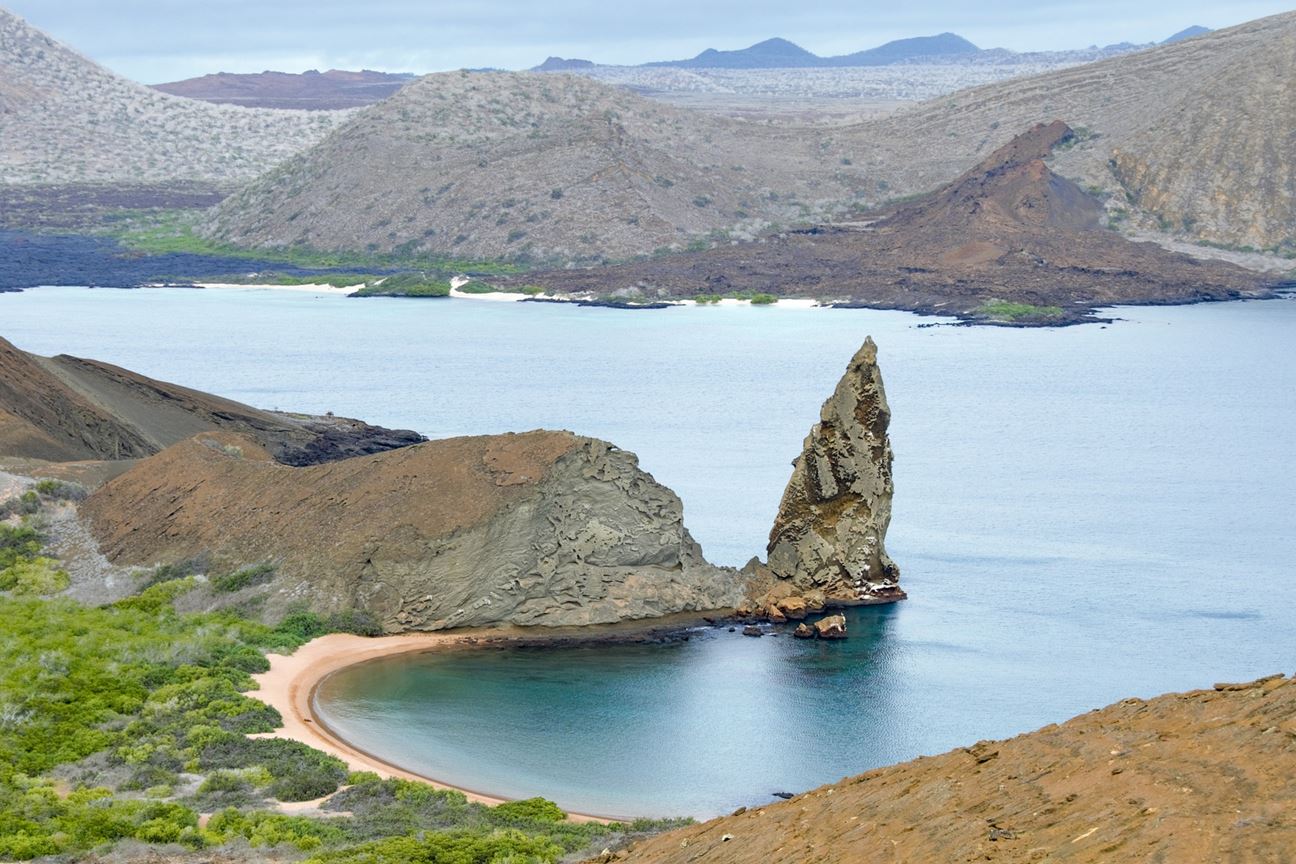
Where are the Galapagos Islands located?
The Galapagos Islands are located deep into the Pacific Ocean — some 1000 kilometres off the western coast of Ecuador. Administratively, the islands belong to Ecuador and comprise 13 large islands and 6 smaller islands. Interestingly, these islands are in both the northern and southern hemispheres, dotted along the equator. Additionally, there are numerous islets and rocks which also support life. Today, the islands are a part of UNESCO World Heritage sites and home to the Galapagos National Park.
The Darwin Connection
Many people associate Darwin and his theory of evolution with the Galapagos Islands. Charles Darwin visited the Galapagos Islands in 1835 as a part of his ‘voyage around the world’ and spent five weeks here making several observations. When he first discovered the many species of finches, he noted that these species vary from island to island. Though similar, these birds have adapted themselves to the environments of the islands. He realised that all the bird and animal species, including tortoises and mockingbirds, are endemic to the island and have arrived from the mainland. These provided him with clues and led him to ponder about concepts such as 'environmental conditions acting as selective agents', 'survival and reproduction of species' and 'birds and animals passing on the adaptive variations to their offspring'. When he finally consolidated all his observations, then came one of the most important concepts of biology — the Theory of Evolution.
Why are the Galapagos Islands so remarkable?
The natural behaviour of the animal and bird species found here is amazingly unique and marvellous. The islands being volcanic, the environment here is harsh and remote. With very little to offer, the species that arrived here could only thrive on cactus, parasites and plants growing out of the lava, to begin with. That, plus the lack of mainstream ecology, led to the species showing drastic adaptation and evolution. Scientists believe these islands are an evolutionary hotspot where birds do not fly, snakes feed on fish and finches drink blood.
Animals to see at Galapagos Islands and survival adaptations that make them so unique!
- Galapagos Giant Tortoises
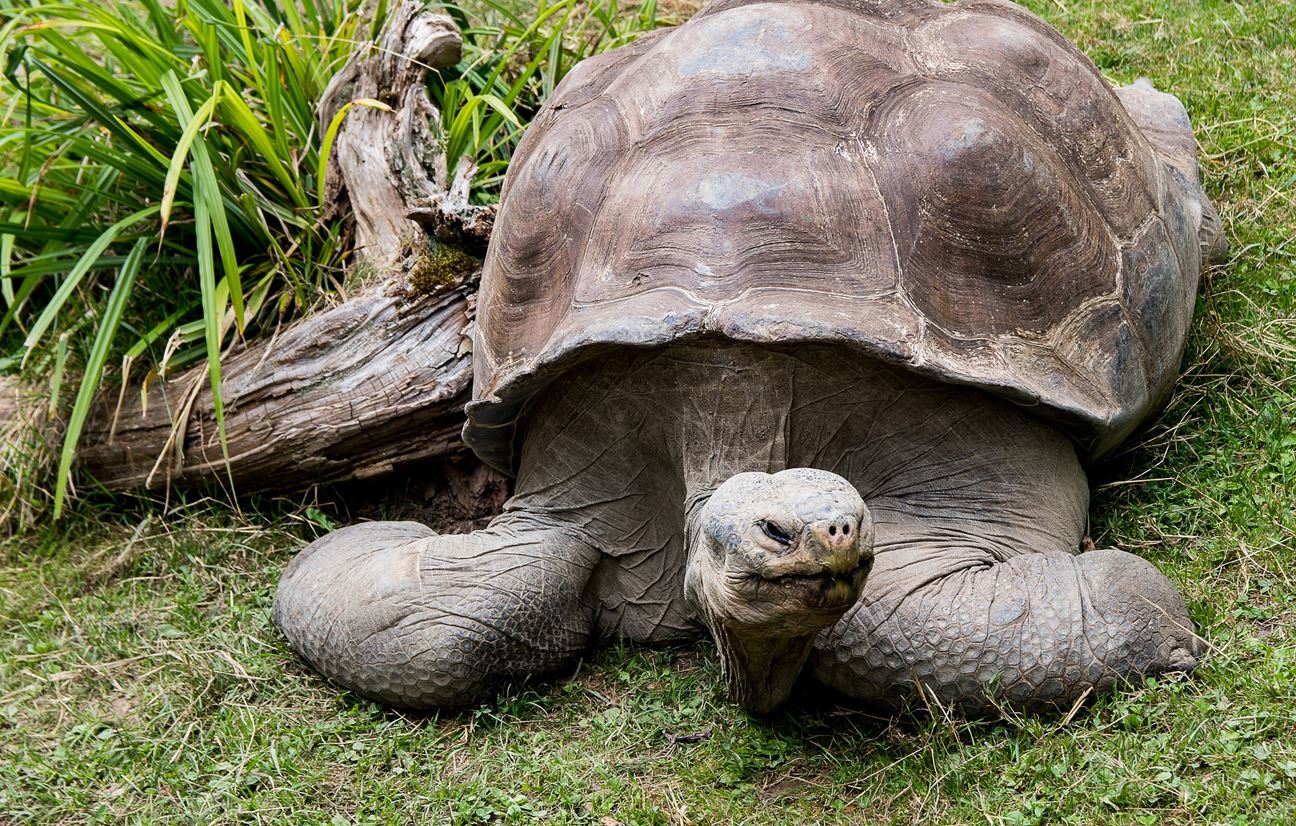
These islands were, in fact, named after the tortoises. The word Galapagos is an ancient Spanish word meaning tortoise. Their history is rather catastrophic. In the 1600s, the pirates stored live tortoises on the ship for their invaluable meat — and that’s how the tortoises reached the island. The Galapagos Giant Tortoise is the biggest tortoise species in the world and can weigh almost 500 kgs. Their potential lifespan is over 150 years. These iconic tortoises are one of the chief attractions of the Galapagos Islands.
Survival Adaptations - Depending on the level of shrubbery on the islands, the tortoises have either short or long legs and necks. They also have different shells, such as saddleback, intermediate, or doomed.
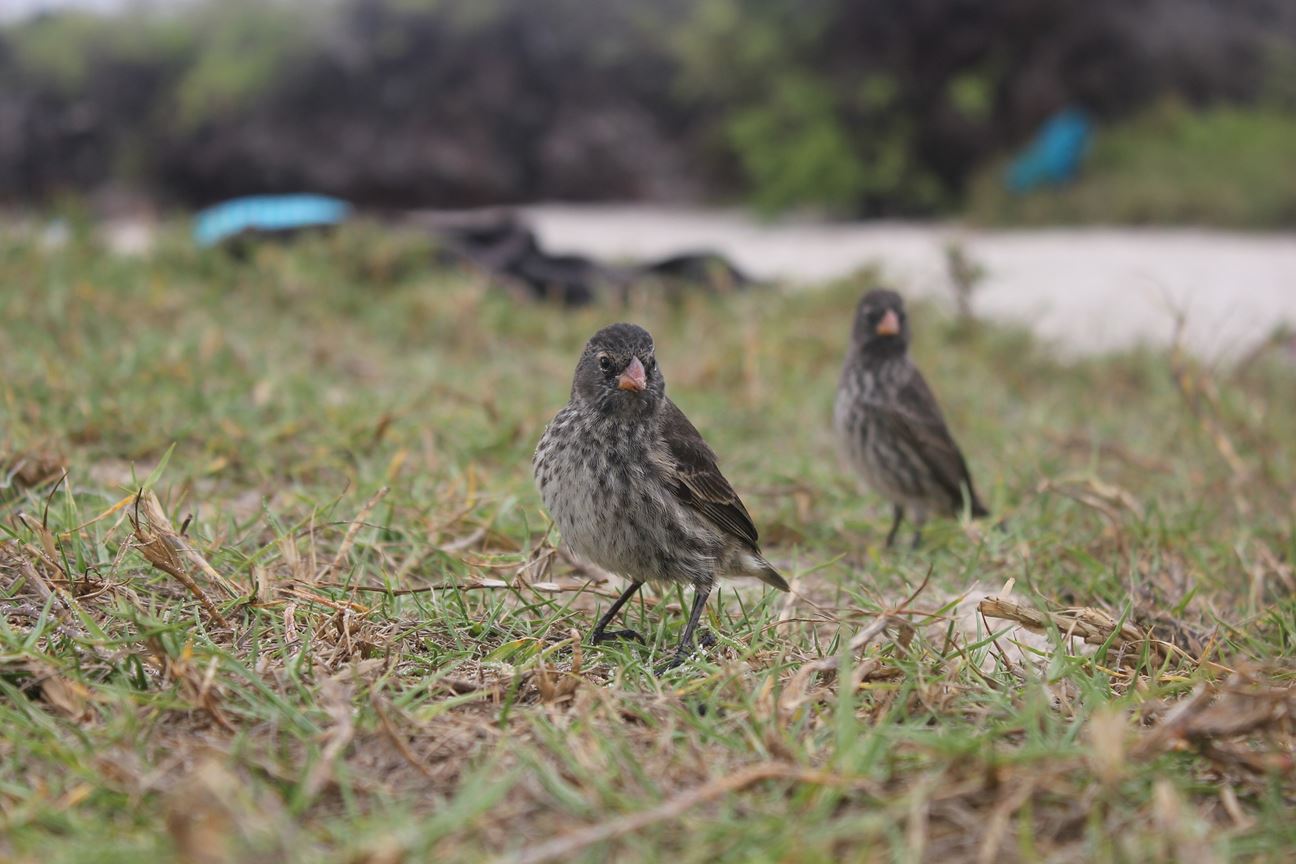
With at least 13 species of finches on the Galapagos Islands, the Galapagos Finch, also called Darwin's Finch, has played an important part in evolutionary biology. The wildly distinctive beak shapes of these finches are a classic example of adaptive radiation - a phenomenon where a genetic mutation causes the organisms to rapidly diversify, both ecologically and morphologically. The finches are distributed widely all over the islands and can be found both highlands and mangroves. Visitors can easily spot these birds, but differentiation of species needs an expert eye.
Survival Adaptations - The beak depths are directly correlated to the size of the finches. Also, consistent environmental variations lead to different food sources. The finches morph their beaks to maximize survival.

Many turtle species are found in Galapagos - like olive ridley, hawksbill, and leatherback. But the Galapagos Sea Turtles are unique to the island. Also called the Pacific Green Sea Turtles, these turtles are known to breed and nest only at the Galapagos Islands. Visitors can easily spot these turtles as these are most commonly found swimming in the shallow waters along the shores. One way to tell these turtles apart is to look at their shells. Their upper shell is darker than the lower shell — a shade of olive black or brown. The green-coloured fat found beneath their carapace given these turtles their name.
Survival Adaptations - Their sharp and finely serrated beak helps them feed on marine plant life such as algae, seagrasses, and seaweeds.
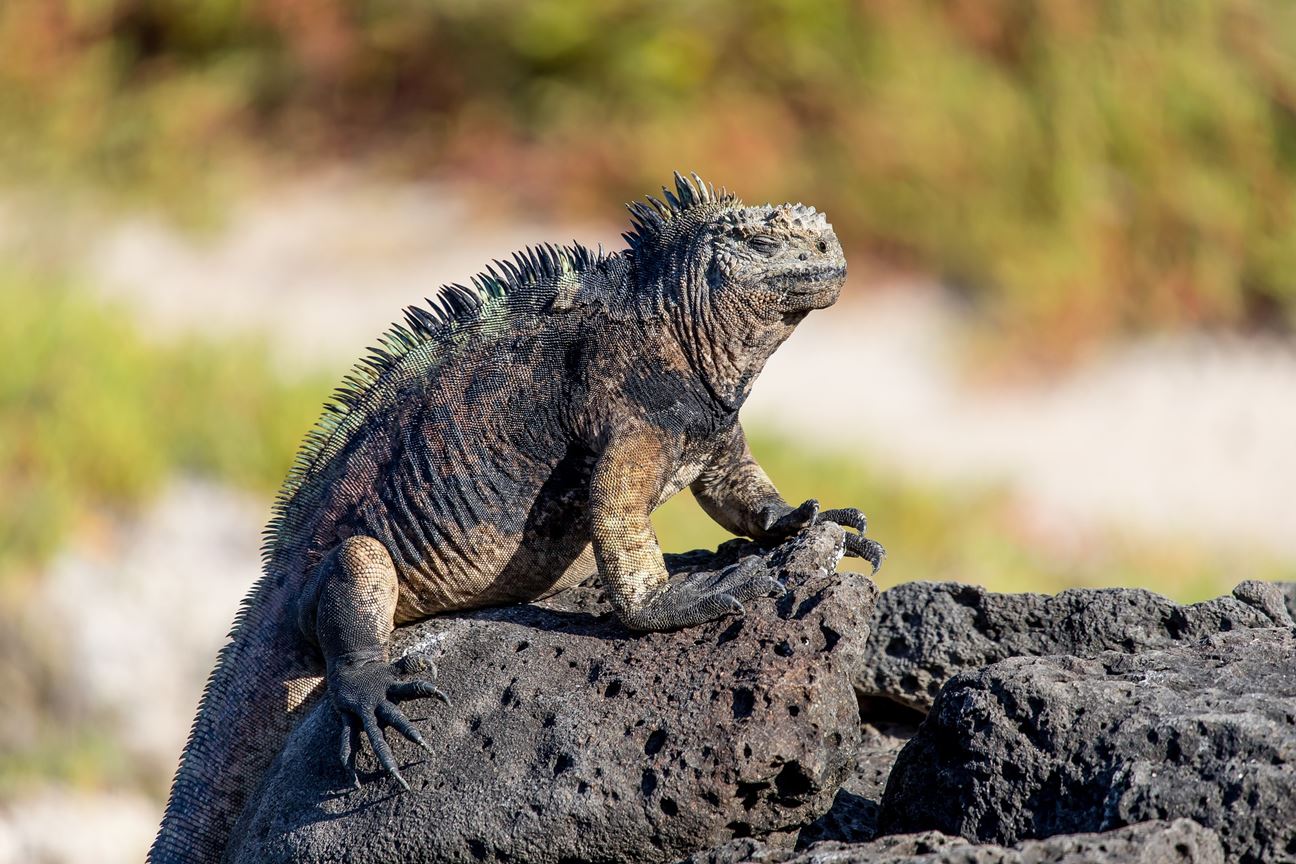
Did you know the Marine Iguana at the Galapagos is the only marine lizard species in the world? These lizards spend time on both on land and in water. While in water, they move in a snake-like motion, and their large and sharp claws help them grip the rocky seafloor, while their blunt snoots help them feed on the marine algae. Marine Iguanas are known to sneeze out excess salt they ingest while in water. As they grow, these lizards show varying colours. Depending on the island they live on, black, green, red, blue, and grey colours are displayed.
Survival Adaptations - Their flattened tail helps them steer easily underwater. Their razor-sharp teeth help them scrap off the tenacious algae. And their longer claws help them cling to the rocks in case of strong underwater currents.

The world’s only flightless cormorant can be found at Fernandina - the westernmost island of the Galapagos. One reason for these birds to go flightless was the lack of predators on land. Usually black, these birds have bright turquoise eyes. Their webbed feet help them balance along the coasts and also swim in the waters. They mostly feed on eels and octopus, which requires them to dive deep in the waters.
Survival Adaptations - A protein gene mutation leads to them having stunted wings and eventually becoming flightless. And the birds became better suited to swim.
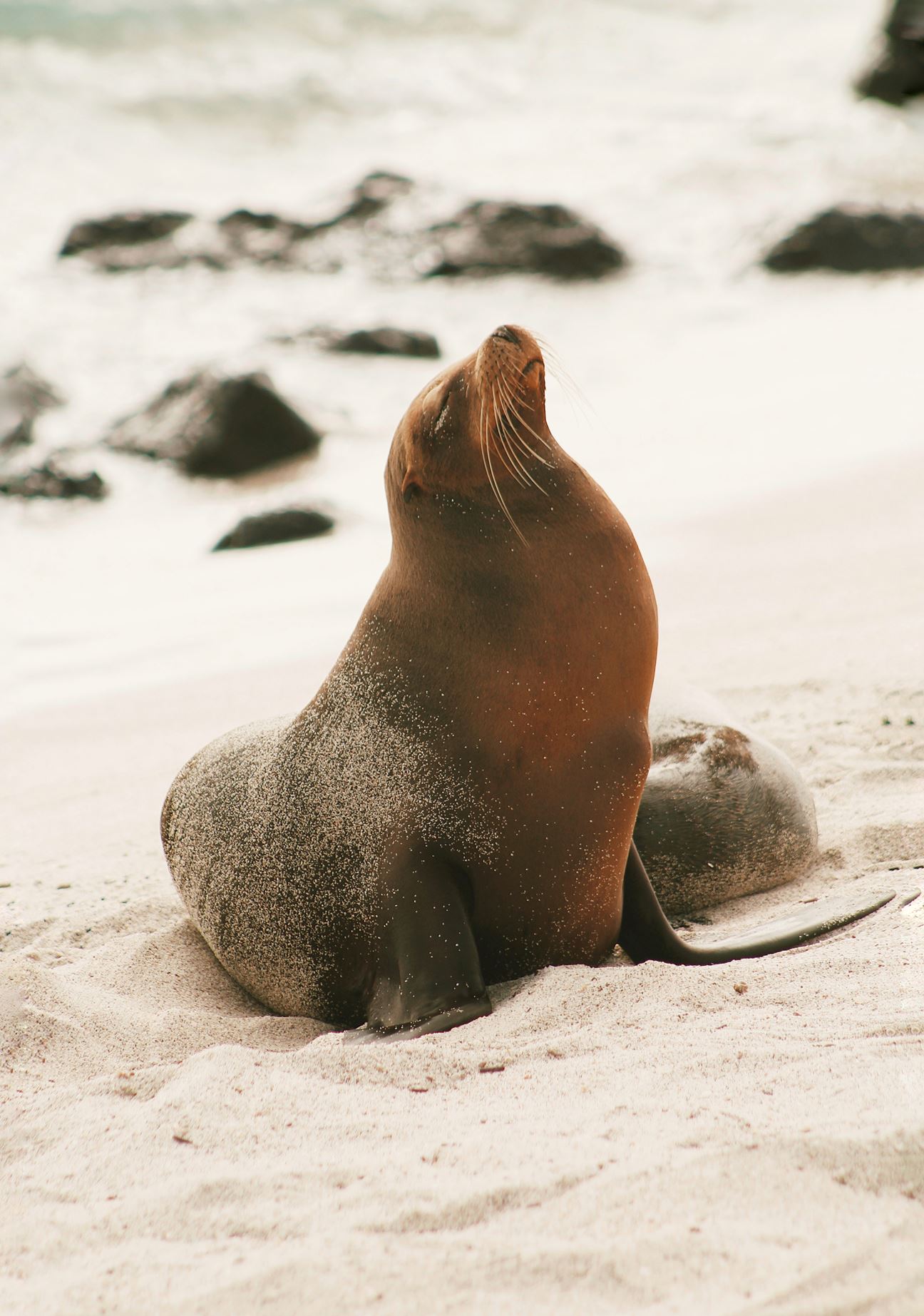
The Galapagos Sea Lions are the smallest sea lion species in the world. These sea lions are not afraid of humans, and hence visitors are often seen petting them. As the largest endemic land animals on the islands, these lions are true Galapagos residents, unlike their counterpart marine mammals.
Survival Adaptations - Their unwrinkled and streamlined body shape makes them efficient hunters while in the sea. Since they do not venture out too deep in the sea, their primary prey is the sardines.
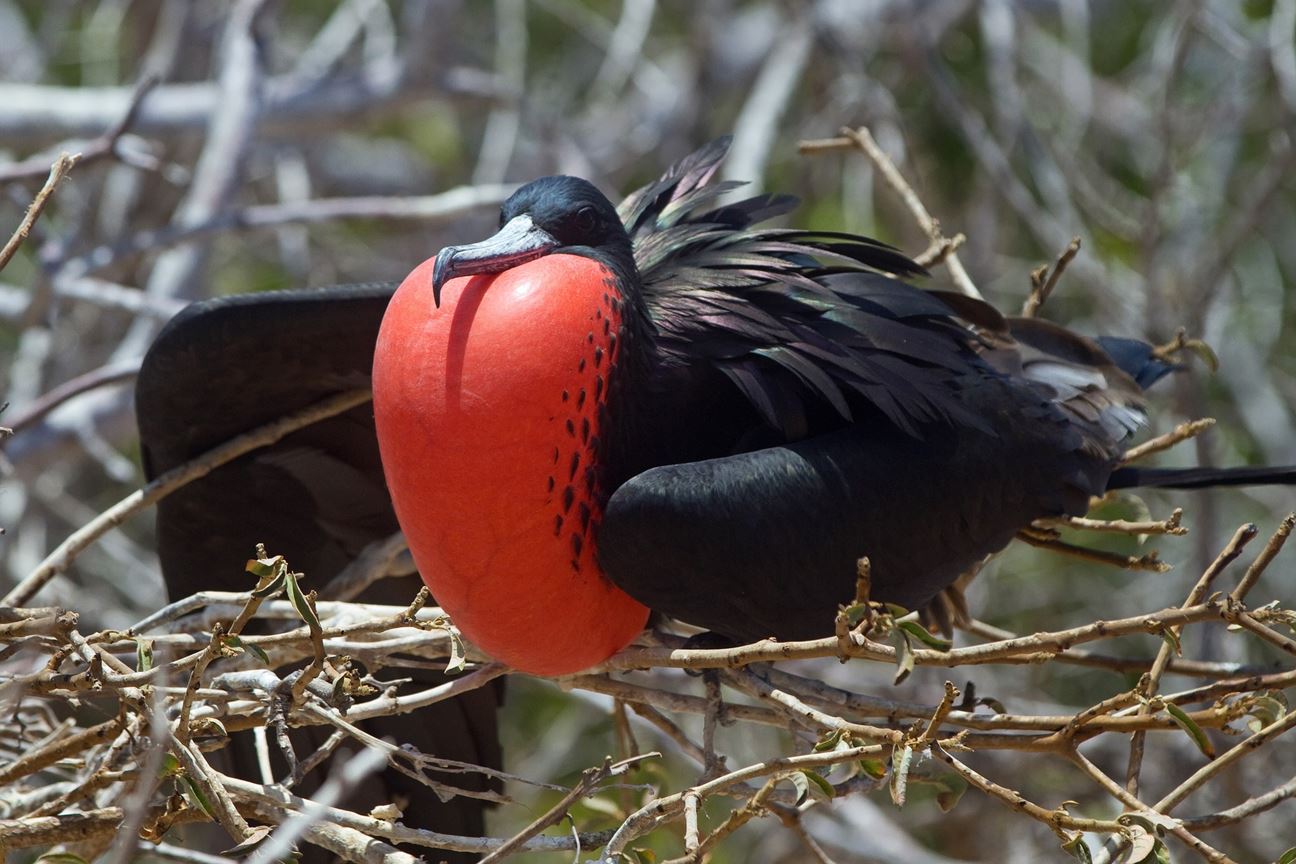
Charles Darwin called the frigate bird ‘the Condor of the Oceans.’ Of the total of five species, two are found in Galapagos - the magnificent frigate bird and the magnificent frigate bird. These birds have the largest wingspan to the body-weight ratio, which provides them with exceptional manoeuvrability while in the air. The birds are usually black, with a slight purple/blue tinge. One of the most striking features of these birds is the large red throat pouch (gular sac) that inflates during the mating season.
Survival Adaptations - Apart from their wings, these birds show several morphological adaptations like short tarsi, small zygodactylous feet that are unwebbed, and a vestigial uropygial gland that waterproofs the plumage.
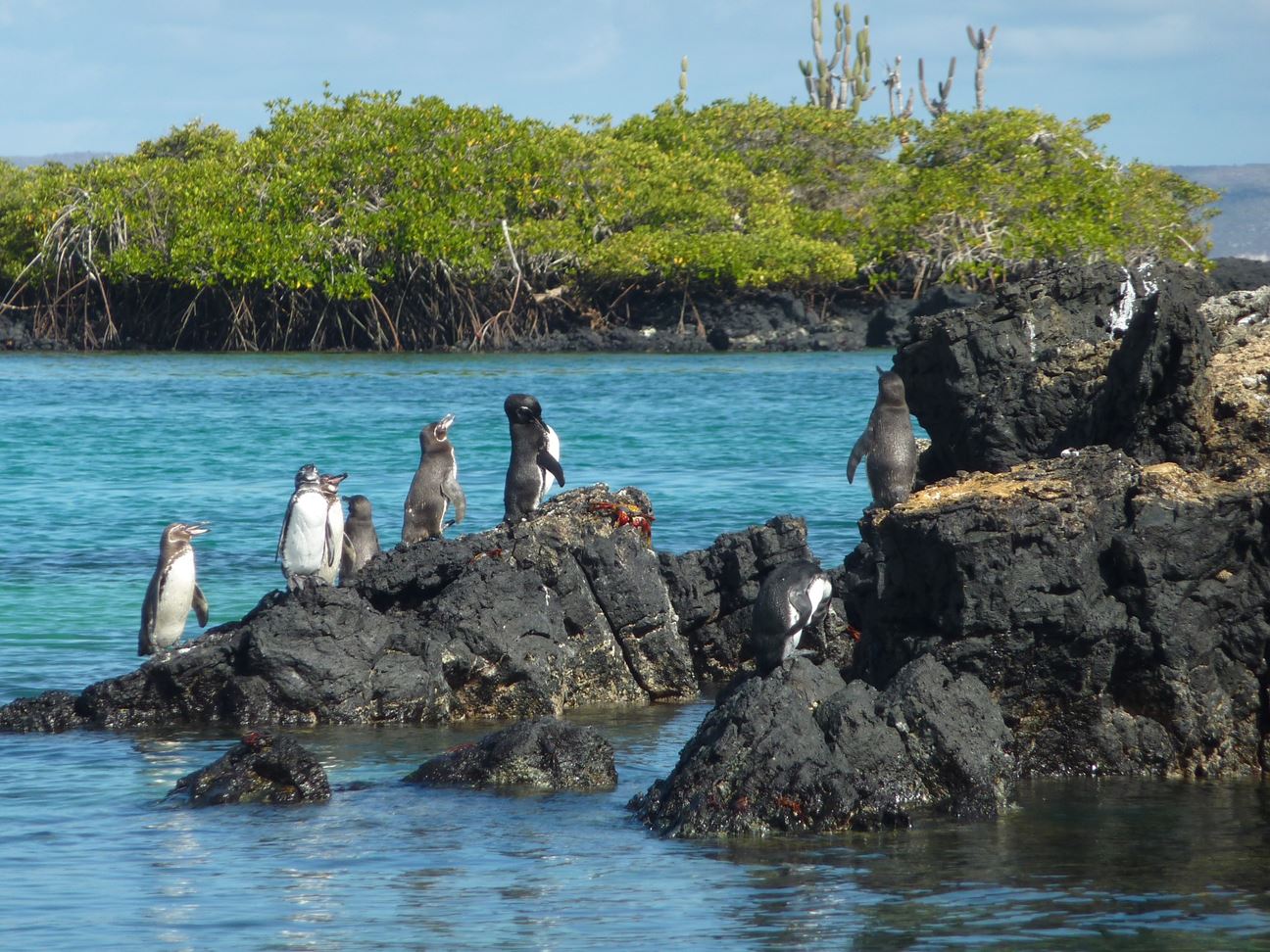
Another unique animal species found at the Galapagos Island is the Galápagos Penguin. These penguins are the only penguin species found to the north of the equator, nesting in the tropical islands. They are also one of the smallest penguin species in the world. Visitors should head to the Isabela and Fernandina islands to catch a glimpse of the Galapagos Penguins.
Survival Adaptations - The Galapagos Penguins have developed behavioural adaptations to stay cool. While most of the penguins live in colder regions of the southern hemisphere, these penguins live in relatively warmer climatic conditions. To keep their bodies cool, these penguins lean forward to shade their feet. They also stretch their flippers in order to lose heat from the sides of the body. Galapagos Penguins are known to spend most of their day in water to remain cool.
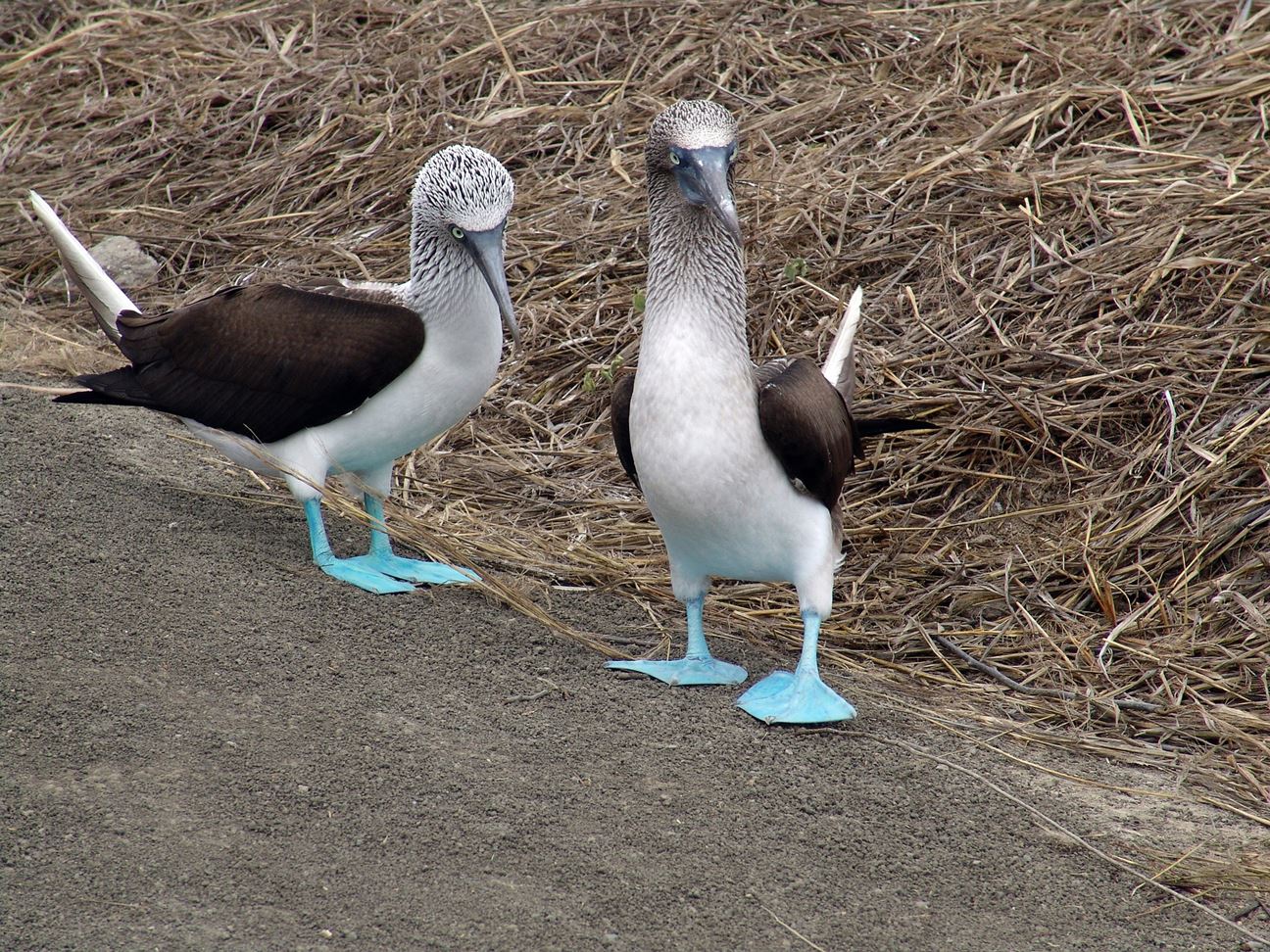
Head to North Seymour Island to spot the amazing blue-footed boobies! These large birds and their distinctively bright feet are one of the main animal attractions at the Galapagos Islands. Female birds usually choose the brightest blue male bird to mate, as the colour indicates the bird’s qualitative genes. On the ground, they move clumsily, but in air, these birds are extremely agile. When they take to the sky, they fly in large groups, sometimes as big as 200.
Survival Adaptations - These birds usually feed on small fish such as sardines and anchovies. When they spot the prey in the water, the bobbies fold back their wings to reduce the drag and give themselves a more streamlined approach that will help them dive into the water. Their serrated beaks help them snap the fish out of the water.
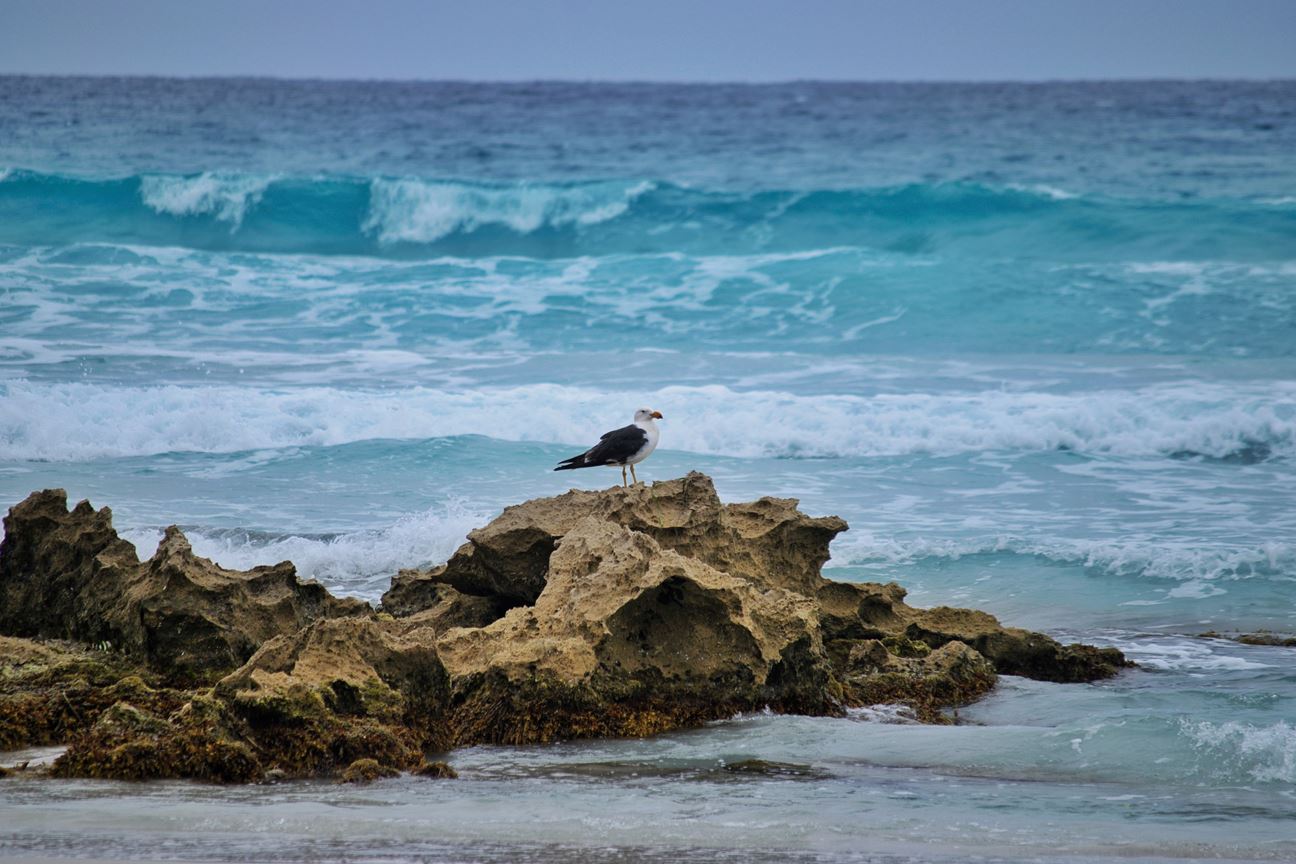
The largest bird in Galapagos, the waved albatross, has a wingspan that extends up to two-and-a-half metres! The bodies are chestnut brown, with a yellow beak and bluish feet, and hence the birds are pretty easy to spot. Males and females engage in one of the most complex mating rituals seen in birds - including dancing, circling, clacking, and waddling.
Survival Adaptations - These birds spend most of their time in the air. The large wings of the Waved Albatross results from low wind speed conditions. The large wings require less wind, which results in them staying afloat longer.
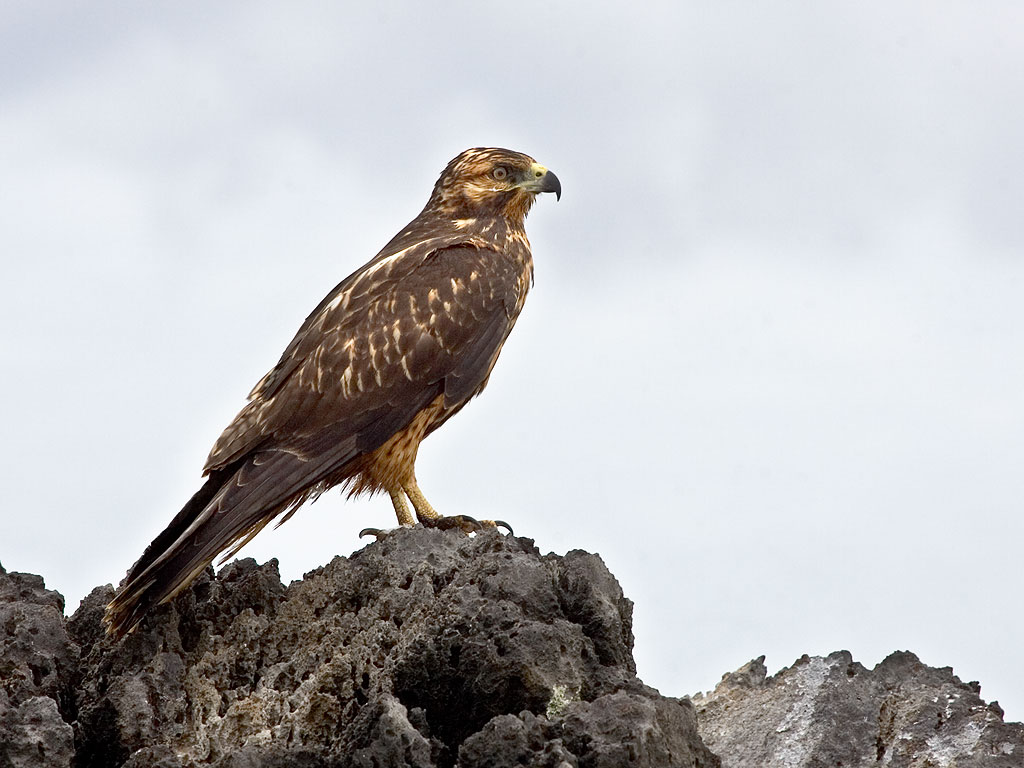
The Galapagos Hawk is a fearless raptor that is found only at the Galapagos Islands. With its broad tail and broad wings, this scavenger bird sits at the top of the food chain. These hawks show cooperative simultaneous polyandry, a rare mating system where up to eight male hawks (not closely related) mate with a single female hawk.
Survival Adaptations - Their broader wingspan helps them soar high in the sky — as high as 200 metres. These birds also soar the skies around the islands in search of food.
Apart from the above, the Lava Gull, Galapagos Batfish, Galapagos Batfish, Galapagos Fur Seal, Lava Lizard, and Sally Lightfoot Crab are a few more animals and birds that are found at the Galapagos Island.
Visiting the Galapagos Islands
Though not easily accessible, the Galapagos Islands receive an unbelievable number of tourists every year. The best way to reach the islands is to book a cruise. If you are prone to seasickness, flights depart multiple times a day from Quito or Guayaquil. As for when to visit, any time of the year is a good time, though June to December is cooler and drier.
Most believe Galapagos Islands to be a mecca for biology, nature, and wildlife enthusiasts. Just like Darwin did over 150 years ago, the visitors to the island can observe species here that are not seen anywhere in the world!